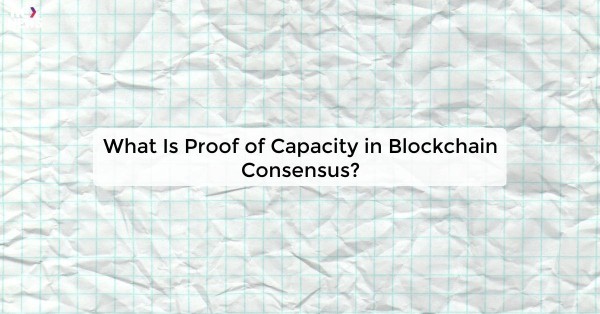Explanation of Blockchain Consensus
Blockchain consensus refers to the mechanism through which participants in a decentralized network agree on the validity of transactions and new blocks being added to the blockchain. In a distributed ledger like blockchain, achieving consensus is crucial to maintaining the integrity and security of the system. Consensus protocols ensure that all participants reach an agreement on the state of the network, preventing fraud and double-spending.
Various consensus algorithms are used in different blockchain networks, each with its own set of rules and requirements for validating transactions and creating new blocks. The most well-known consensus mechanisms include Proof of Work (PoW), Proof of Stake (PoS), Delegated Proof of Stake (DPoS), and Proof of Authority (PoA). These algorithms play a vital role in ensuring that transactions are verified, added to the blockchain, and that the network remains secure and operational.
Understanding Proof of Capacity
Proof of Capacity is a consensus mechanism that allows participants in a blockchain network to showcase their commitment to the network by allocating a certain amount of storage capacity. This means that the amount of influence a participant holds in the network is directly proportional to the amount of storage space they have dedicated. Unlike Proof of Work or Proof of Stake that require computational power or holdings of tokens, Proof of Capacity relies on the storage capacity of participants as the basis for validating transactions and securing the network.
In the Proof of Capacity mechanism, participants pre-compute a significant amount of storage space with different pseudorandom functions and store them on their hard drives. When a new block needs to be added to the blockchain, participants use their pre-generated plots to prove that they have sufficient storage space available. The winning participant, who is chosen to add the new block, is determined by a combination of luck and the amount of allocated storage space, thus ensuring a fair and decentralized process of block validation.
How Proof of Capacity Works
Proof of Capacity is a unique consensus mechanism employed in blockchain technology that relies on a user's available hard drive space rather than computational power to validate transactions. In essence, instead of utilizing energy-intensive mining processes like in Proof of Work, Proof of Capacity participants allocate space on their hard drives to store cryptographic data known as plots. These plots are pre-generated cryptographic files that can be quickly accessed to validate transactions, making the process faster and more energy-efficient compared to traditional mining methods.
When a user wishes to participate in a Proof of Capacity blockchain network, they create these plots by using a plotting software to generate the necessary cryptographic data and save it onto their hard drives. Once the plots are created, participants can begin mining by scanning their plots to find solutions to complex algorithms presented by the network. This process is known as 'plotting' and 'mining,' where miners have the chance to 'win' the right to validate a new block and receive rewards based on their capacity and contribution to the network.
Benefits of Proof of Capacity
Proof of Capacity offers several advantages that make it a compelling consensus mechanism in the realm of blockchain technology. Firstly, this approach is highly energy-efficient compared to Proof of Work (PoW) and even outperforms Proof of Stake (PoS) in terms of energy consumption. By utilizing the available storage space on hard drives rather than relying on costly computational power, Proof of Capacity significantly reduces the environmental impact traditionally associated with mining cryptocurrencies.
Additionally, Proof of Capacity promotes a more decentralized network by allowing participants to contribute based on their storage capacity rather than their computational capabilities. This results in a more inclusive ecosystem where individuals with modest hardware setups can still actively participate in securing the network and earning rewards. Furthermore, the distribution of block rewards is fairer as it is based on the amount of storage space dedicated to the network, providing a level playing field for all participants.
Comparison with Other Consensus Mechanisms
When comparing Proof of Capacity with other consensus mechanisms like Proof of Work and Proof of Stake, one key difference lies in the way they validate transactions. Proof of Capacity involves miners allocating storage space on their devices to generate plots for earning block rewards, whereas Proof of Work relies on computational power through complex mathematical puzzles, and Proof of Stake uses validators who are chosen based on the amount of cryptocurrency they hold.
In terms of energy efficiency, Proof of Capacity has been shown to be more eco-friendly compared to Proof of Work, which consumes significant amounts of electricity due to the computational power required to mine blocks. Additionally, Proof of Capacity allows for more decentralized participation since anyone with storage space can participate in the consensus process, unlike Proof of Stake which may favor those with larger holdings of the cryptocurrency being staked.
